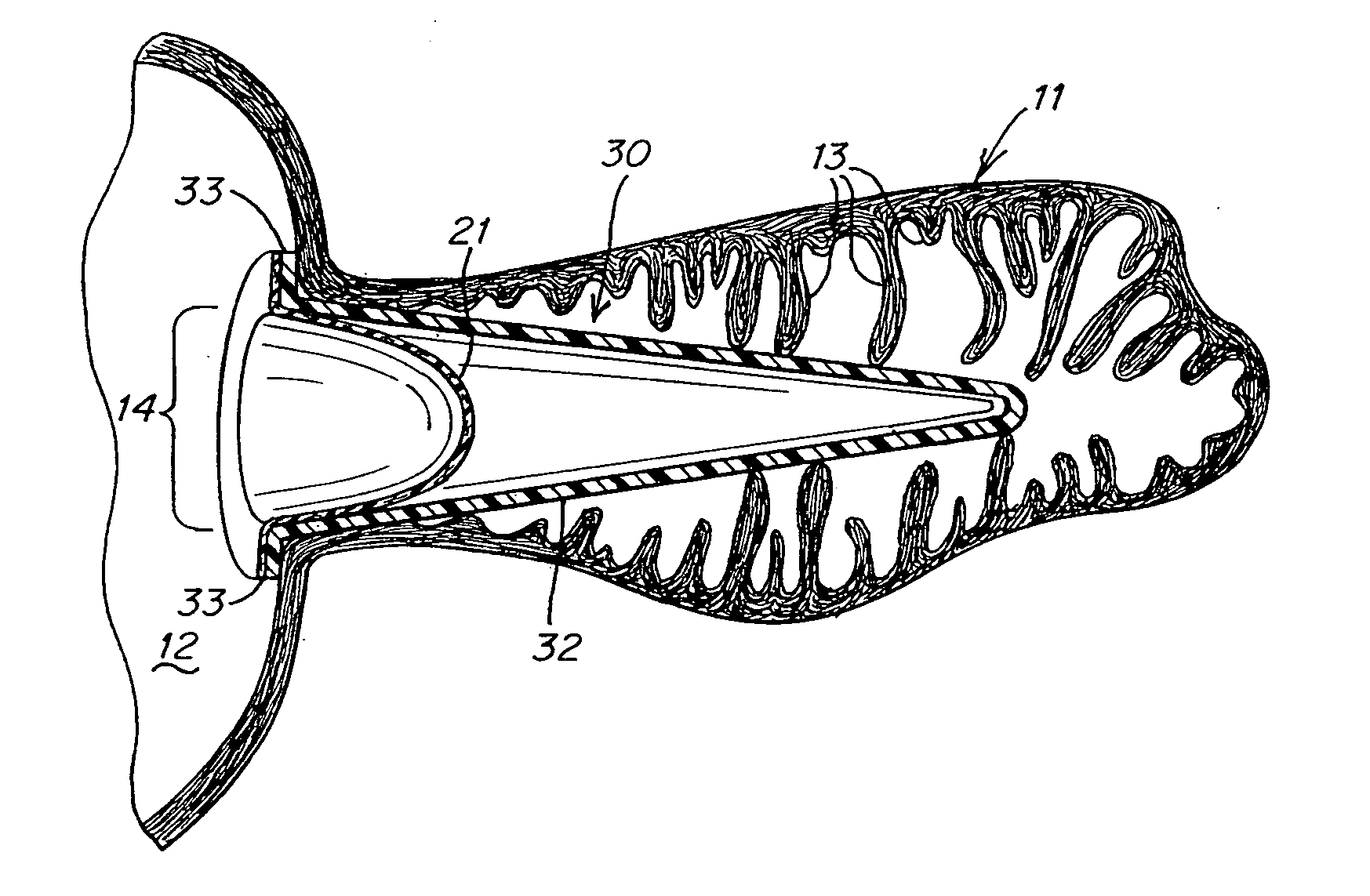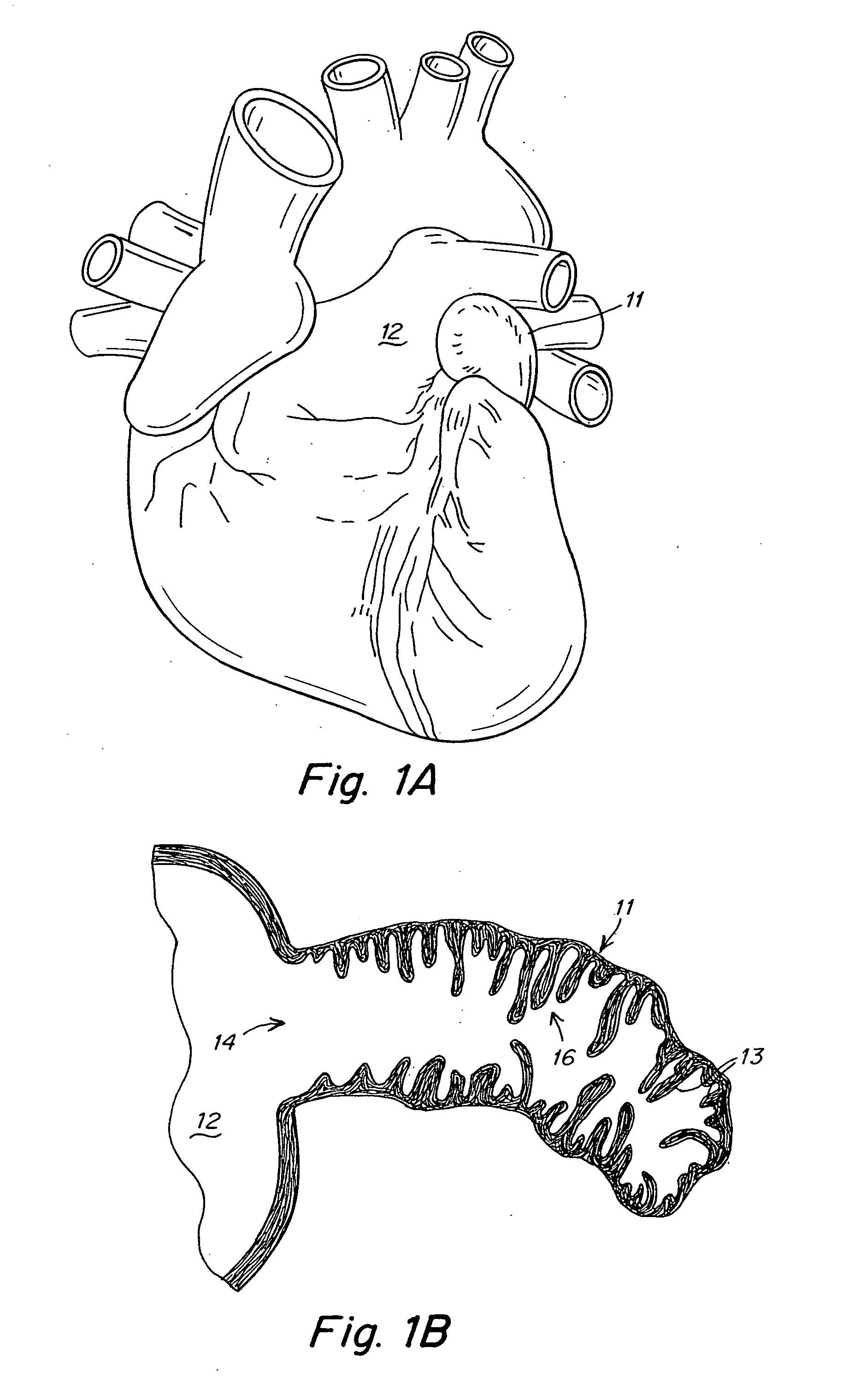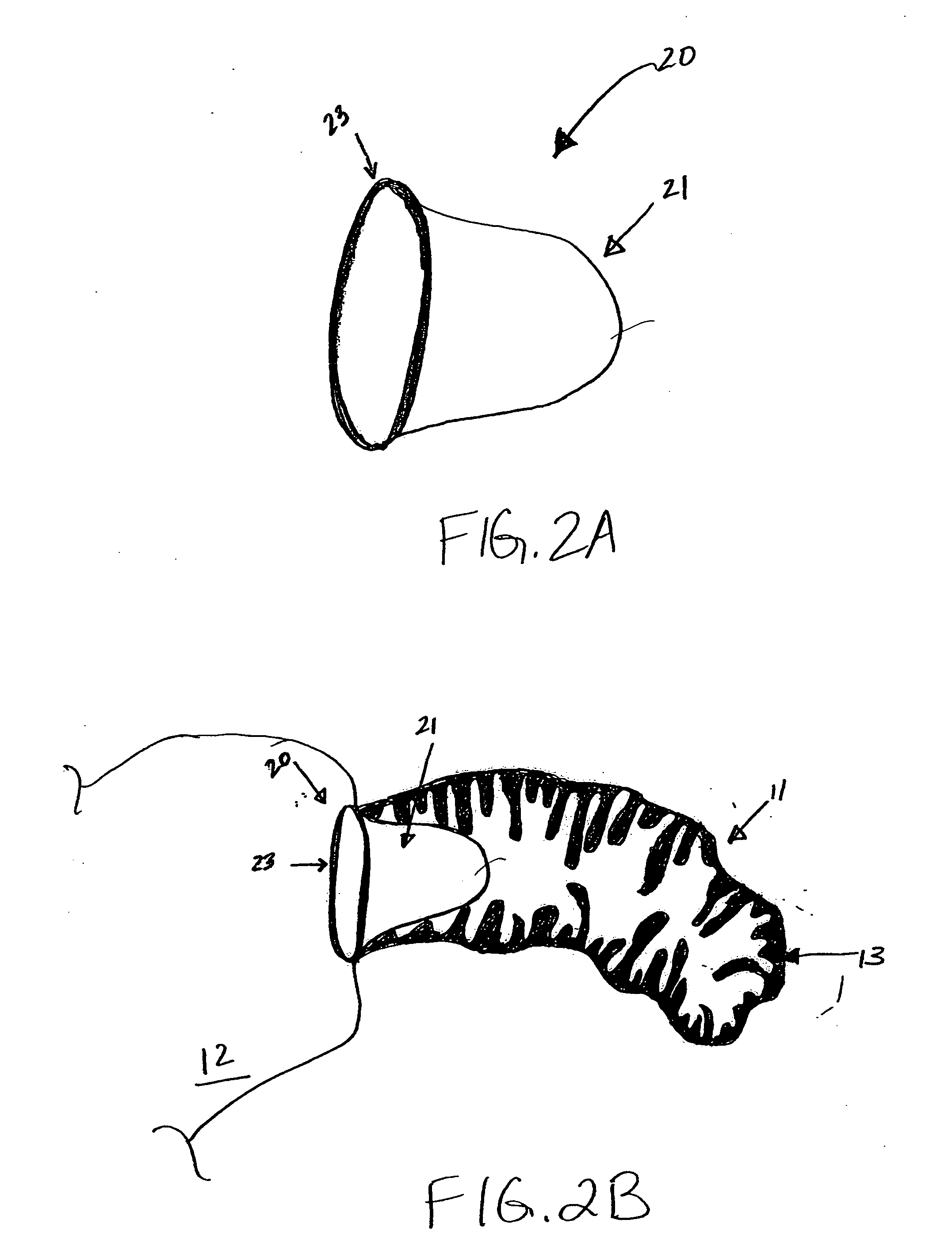Device and methods for preventing formation of thrombi in the left atrial appendage
a technology of left atrial appendage and thrombosis, which is applied in the field of devices and methods for preventing the formation of thrombosis in the left atrial appendage, can solve the problems of complex administration of warfarin, heart failure, stroke or transient ischemic attack (tia), etc., and achieve the effect of reducing the likelihood of thrombosis
- Summary
- Abstract
- Description
- Claims
- Application Information
AI Technical Summary
Benefits of technology
Problems solved by technology
Method used
Image
Examples
Embodiment Construction
[0027] The present invention provides a device that modifies the LAA to reduce the likelihood of thrombus formation in the LAA during AF and, subsequently, stroke. According to at least some embodiments, this device accomplishes its objective by remodeling the LAA in at least two ways. First, the device reduces the volume of the LAA, thereby minimizing blood stasis during AF. Second, the device smoothes the internal surface of the LAA, thereby obliterating the crenellations that impede blood flow which can lead to blood stagnation and clotting in the LAA. These modifications permit blood to enter and exit the LAA more easily during AF. Thus, the device promotes or enhances the drainage of vascular flow from the LAA. Advantageously, because the device modifies, rather than eliminates, the LAA and potentially maintains LAA function, it overcomes the controversy and potential drawbacks associated with current LAA obliteration or ligation procedures.
[0028] In the description herein “di...
PUM
 Login to View More
Login to View More Abstract
Description
Claims
Application Information
 Login to View More
Login to View More - R&D
- Intellectual Property
- Life Sciences
- Materials
- Tech Scout
- Unparalleled Data Quality
- Higher Quality Content
- 60% Fewer Hallucinations
Browse by: Latest US Patents, China's latest patents, Technical Efficacy Thesaurus, Application Domain, Technology Topic, Popular Technical Reports.
© 2025 PatSnap. All rights reserved.Legal|Privacy policy|Modern Slavery Act Transparency Statement|Sitemap|About US| Contact US: help@patsnap.com



